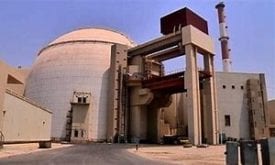Iranwire – A recently-published report examining decades of water resource management in Iran has made the most convincing argument yet that the political structure in Iran – not global warming, sanctions or the behaviour of Iranian citizens – is what’s stopping the country from resolving the water crisis.
Published in the peer-reviewed journal Sustainability, University of Maryland researcher Mehdi Ketabchy’s Investigating the Impacts of the Political System Components in Iran on the Existing Water Bankruptcymeticulously examines the impact of water policies in the Islamic Republic in recent decades.
In a conclusion that is nothing if not sober and scientific, it recommends “a systematic transition towards a democratic, decentralized, non-ideological, and economically diverse political governance” as a necessary – but not sufficient – condition to mitigate water bankruptcy in Iran.
Ketabchy is a PhD student and water resources engineer at the university’s Department of Civil and Environmental Engineering. By “water bankruptcy”, he told IranWire, we mean “a post-crisis stage where the expectations from the system are more than there is in the water inventory”.
Water buffalo try to keep cool in the dried-up Hor al-Azim wetlands, summer 2021
The paper is the result of two years’ research, during which time Iran was racked more popular mass demonstrations sparked by water shortages in Khuzestan and Isfahan. These and other major manifestations of the crisis, like the catastrophic drying-up of Lake Urmia, have grabbed headlines. But, Ketabchy’s paper corroborates, these didn’t occur in a vacuum: they are the result of whole-system deficiencies that pose a potential threat to the rest of the country too.
In 2021, the total annual renewable and available freshwater per capita in Iran stood at less than 124 billion cubic meters (bm3) and 1479 m3 respectively: more than in some neighboring countries like the UAE, but disproportionately distributed, with 25 percent of the country receiving more than 75 percent of annual rainfall.
The Karkeh River in Khuzestan
Back in 1971 Iran became the first state in the Middle East to form a Department for Environment amid the Pahlavi-era “White Revolution” land reforms, which saw many pastures converted to irrigated and agricultural lands. But in the decades that followed, Ketabchy’s study observes, factors like over-grazing, high population growth in the 1980s and 1990s, industry and the aggressive over-extraction of groundwater drove the country to a state of water bankruptcy, and in many areas, to anthropogenic – human-created – desertification: the permanent subsidence of once-fertile plains.
Behind all this has lain a political system that does not allow for effective management of the water crisis. Away from decisions by individual authorities, Ketabchy’s paper points to a number of problems inherent to the current Iranian state structure that are aggravating the problems today.
Features of the System
- Democratic Deficit: Involving citizens in resource management, and giving their official representatives legitimacy through real elections, creates a higher degree of buy-in from the public, Ketabchy argues. On the flipside, without citizens’ participation environmental issues can come to be treated as “marginal” and non-urgent until such point as they become “national catastrophes” – as has been the case in Iran.
- Centralization: The Islamic Republic’s heavily centralized decision-making structure is making it impossible to address water shortages effectively, Ketabchy states. Power is concentrated more in the hands of the Supreme Leader, the ministries, the IRGC, the military and other Tehran-based actors more than it is with local stakeholders and municipalities.
Politicians only have relatively short, fixed terms in government and want to project success. Because of this, Ketabchy observes, they have mostly prioritized “populist development”: short-term, short-sighted projects that temporarily boost the apparent water supply, such as dam-building in the 1980s and 90s, and water transfer projects.
Lake Urmia has lost nearly 95 percent of its volume in two decades
Ironically, Ketabchy says, these quick-fix solutions can put more stress on resources in the long run by making people believe, wrongly, that water is cheap and abundant. “Extensive intra- and inter-basin water transfer from areas such as the Zagros Mountains to Isfahan, Yazd, and Kerman primarily for agricultural and industrial uses… has not improved water supply in destination areas, but has led to water shortages in areas such as Isfahan, due to the illusion of abundant and cheap water.”
Speaking to IranWire, Ketabchy that there is no shortage of good intention or expertise on the part of Iranian officials: quite the opposite. In the case of the Lake Urmia Restoration Committee, for instance, even though it was formed top-down by executive order of the President, “Unlike what so many people say, had it not been for this committee, there would probably be no Lake Urmia.
“We also need to differentiate between the people who are in charge, and the system that’s in charge,” he added. Even now, I know of so many authorities in Iran who are good people and want to work in the environment section to improve the country. The problem is that the overall structure doesn’t let those people get through.”
- Conflicts of Interest: A multiplicity of different sectors and parallel decision-makers, from paramilitary entities like the IRGC to MPs to private firms, have influence on resource management in Iran. These disparate groups often have different regional aims.
This, Ketabchy says, has given rise to some irreconcilable conflicts of interest. “Imagine a basin where the Department of Environment is emphasizing reducing water consumption, and at the same time, the Ministry of Energy or Agriculture emphasizes improving infrastructure for groundwater extraction. All these institutions have their own reasoning, and the Department of Environment is not empowered to issue regulations or enforce them.”
A dam on the Karun River, Khuzestan
- Ideological Policymaking: Many countries in the MENA and around the world are taking steps to deal with water bankruptcy. But in Iran, Ketabchy says, “The level of ideological policymaking is much higher than in other countries. We are looking at a country that wants to sacrifice everything for its ideology, and one of the first things that will be sacrificed is the environment.”
Some key manifestations of this include population growth, a favorite policy of Ayatollah Khamenei. This drive, Ketabchy says, is part of the reason Iran’s per capita water availability has gone from about 3800 cubic meters per year in 1977 to 1400 per year in 2017. At the same time, he says, he influence of politics in land-use planning has made the population distribution even more uneven, creating local mismatches between supply and demand.
Farmers in Isfahan protest against water shortages partly brought about by water transfer projects, November 2021
The Islamic Republic’s emphasis on national self-sufficiency in industry and farming has also intensified shortages: the 2005 drive for self-sufficiency in wheat production, and subsidizing water-intensive crops like sugar beet, watermelons and pistachios, has encouraged massive groundwater extraction by farmers while making Iran’s economic problems worse.
Iran has a common sea with Bahrain, Saudi Arabia and the UAE – and some now-out-of-date agreements on the Arvand River with Iraq, and Afghanistan on the catchments of Lake Hamoun. It should be working to urgently establish “joint water consortium” based on common interests, Ketabchy says, but Tehran’s foreign policy stances are also creating “deep obstacles” to effective collaboration.
- State-Controlled, Resource-Dependant Economy: Iran’s economic reliance on oil and gas has a destructive impact on the environment through the aggressive exploitation of natural resources. But the state and the military also overwhelmingly control the economy. This and the lack of water pricing and an efficient income tax system, Ketabchy argues, mean citizens and the private sector have little investment or stake in water management, or in diversifying the economy.
“To overcome these issues,” Ketabchy told IranWire, “rather than focusing on the previous, managerial system, which was solely based on creating resources, we have to focus on reducing water consumption, and adaptation to the bankruptcy paradigm: nearly impossible in the current political system. Where you have non- national interest-based goals, you won’t see progress.”
What About Sanctions?
The Islamic Republic has blamed sanctions for limiting Iran’s financial resources for accessing new technologies, and for blocking scientists and experts from travelling to the country. The reality is more complex, Ketabchy notes; there have been cases to the contrary as well.
Sanctions have provably limited Iran’s access to some development funds and loans, including from the UN’s Environment Programme and Food and Agriculture Organization of the United Nations. But even before sanctions were imposed, Ketabchy notes, Tehran had been warned about the non-feasibility and non-implementation of some water projects it sought funds for.
In 2005, for instance, the World Bank gave Iran more than $150m to build sanitation plants, sewer and water supply networks in six sites including Ahwaz and Anzali. More than 10 years after the expected completion date, none of them had been completed, and an official in Ahwaz claimed at least some of the funds were either misspent or never used.
Ketabchy also points out that from 2012 to 2018, both under sanctions and when they were lifted, the Department of Environment’s budget steadily increased from a share of about 0.005 percent of the total budget to 0.008 percent in 2021-22 (about 1.25 trillion tomans).
Importantly, in the same period, two paramilitary and religious entities – namely, the Basij and seminaries – consistently received two to seven times the cash afforded to the Department of Environment, and their budgets also snowballed. This suggests sanctions did not make a major difference to public spending, or how spending was prioritized by Tehran.
Environmentalists Morad Tahbaz, Niloufar Bayani, Hooman Jokar, Taher Ghadirian, Sam Rajabi, Sepideh Kashani, Amir Hossein Khaleghi and Abdolreza Kuhpayeh were arrested and jailed in 2018
Meanwhile, Ketabchy notes, the state’s attitude to environmentalists has hardened since 2017, with a surge in detentions of activists and green campaigners. This has put some foreign experts off visiting Iran for consultations, even when not impeded by sanctions. “The government used to think environmental issues were a kind of outlet for people to be able to get their voices out in the community,” Ketabchy says. “But for the last five to 10 years, environmental problems have increased, and we’ve seen large pressure on activism because it can be seen as a consequence of political problems.”
Untenable Without Structural Change
In Mehdi Ketabchy’s view, the current political system in Iran is what is leaving no room for these issues to be resolved. There are some technical solutions that could mitigate – if not end – Iran’s water crisis, and some of these aren’t necessarily complex – the proper management of groundwater aquifers, for example, and recycling and reusing municipal waste water – but the administrative structure of the Islamic Republic makes them impracticable.
To begin tackling the problem, Ketabchy told IranWire, “There are several conditions that will have to be met: a non-ideological political system, decentralized governance, stakeholder engagement and improved transparency, and an economically diverse system.
“Going through a systemic transition in Iran would not solve all our problems. The governance approaches I mention are all just necessary conditions and not the sufficient ones: we would need to focus on the technical aspects too. We also know, without a significant change to the current system, many problems will get worse.
“There is no single country that doesn’t have a democratic and non-ideological political system and at the same time, a great water sector. You can’t find it.”
 Shabtabnews In this dark night, I have lost my way – Arise from a corner, oh you the star of guidance.
Shabtabnews In this dark night, I have lost my way – Arise from a corner, oh you the star of guidance.



